Give Feedback
Give Feedback Option
Hello! Please take a screenshot and email it to educationsimplify@gmail.com.
Email screenshot to: hellofromeducatesimplify@gmail.com
About this course:
This course bundle includes:
Price: $20.00
Includes:
Substance Use Disorders
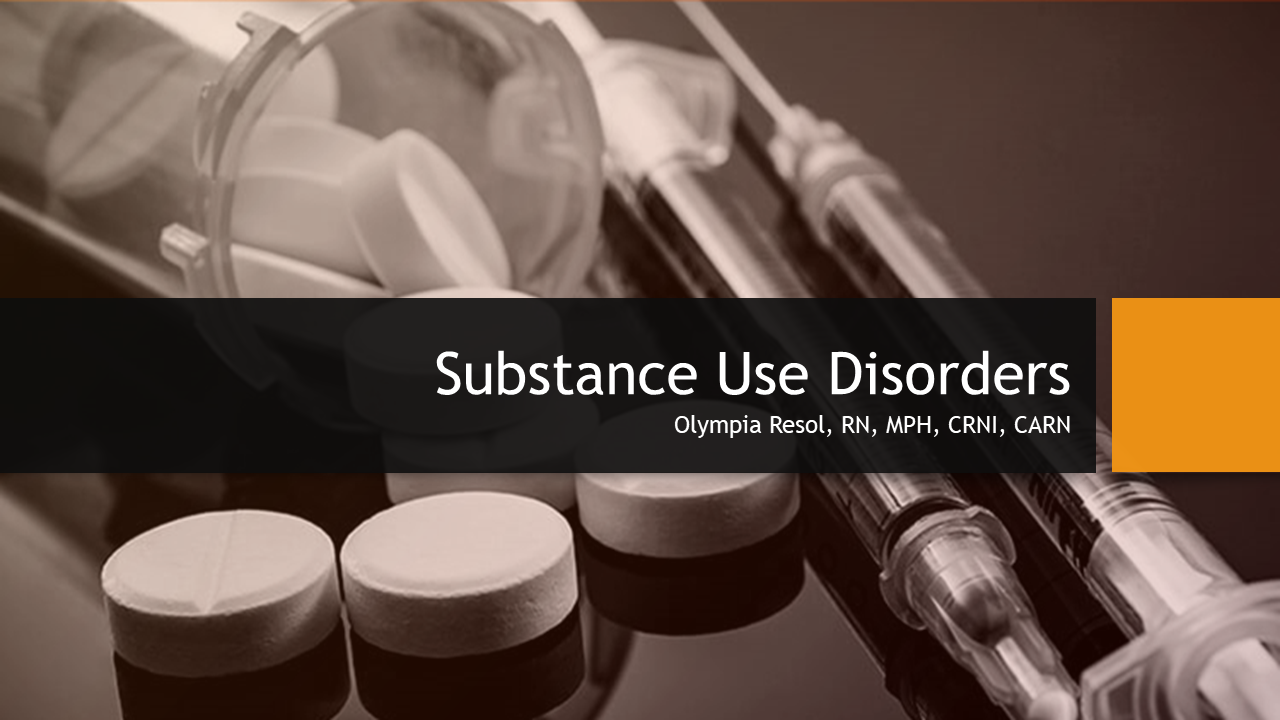
ONE survey question ONLY @ the end
LEARNING OUTCOMES- Describe trends in the epidemiology of substance use in the United States.
- Identify principles of preventing substance use disorders.
- Describe the components of an assessment for substance use disorders.
- Summarize the treatment approaches for patients with a substance use disorder.
View More
ONE survey question ONLY @ the end
LEARNING OUTCOMES
- Describe trends in the epidemiology of substance use in the United States.
- Identify principles of preventing substance use disorders.
- Describe the components of an assessment for substance use disorders.
- Summarize the treatment approaches for patients with a substance use disorder.
What is Addiction?
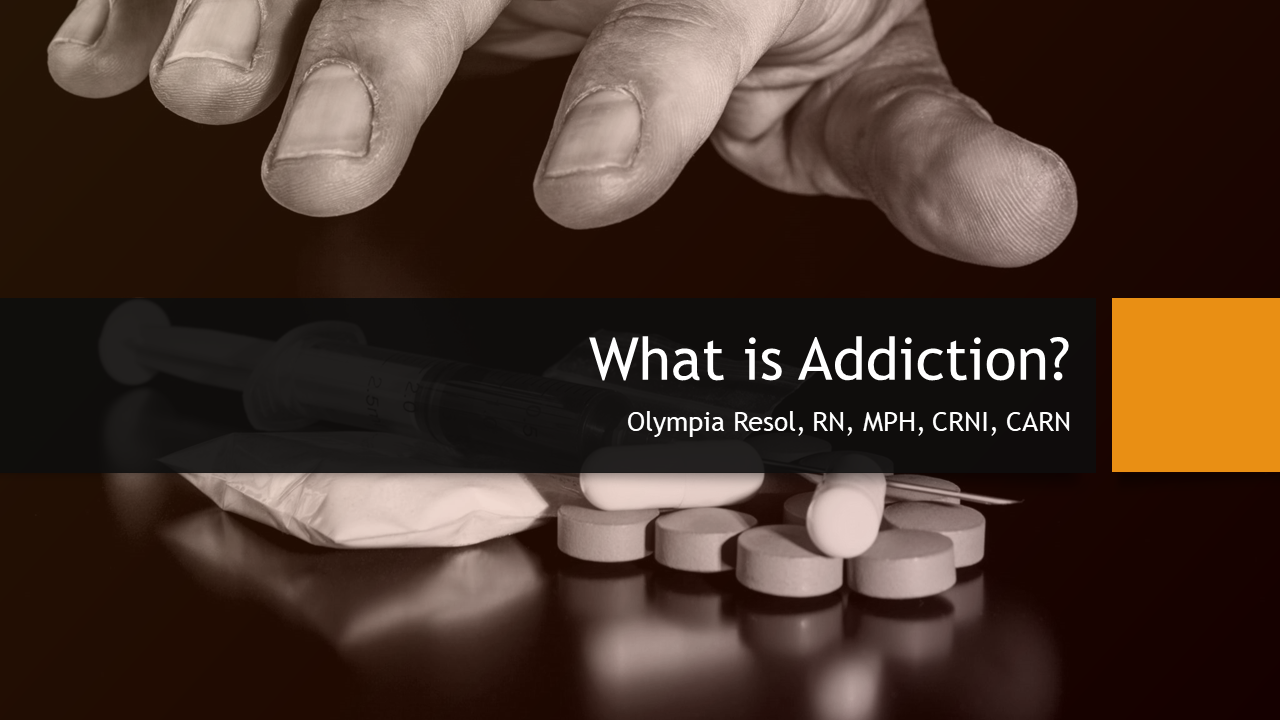
ONE survey question ONLY @ the end
Course OverviewOur Epidemiology, Causes and Risk Factors of Addiction course discusses diagnosing substance use disorders.It offers a brief overview of medications used to counteract the effects of withdrawal. It also provides a detailed look on the medications used to treat opioid, alcohol and tobacco use disorders.
View More
ONE survey question ONLY @ the end
Course Overview
Our Epidemiology, Causes and Risk Factors of Addiction course discusses diagnosing substance use disorders.
It offers a brief overview of medications used to counteract the effects of withdrawal. It also provides a detailed look on the medications used to treat opioid, alcohol and tobacco use disorders.
Substance Use Disorder in Nurses
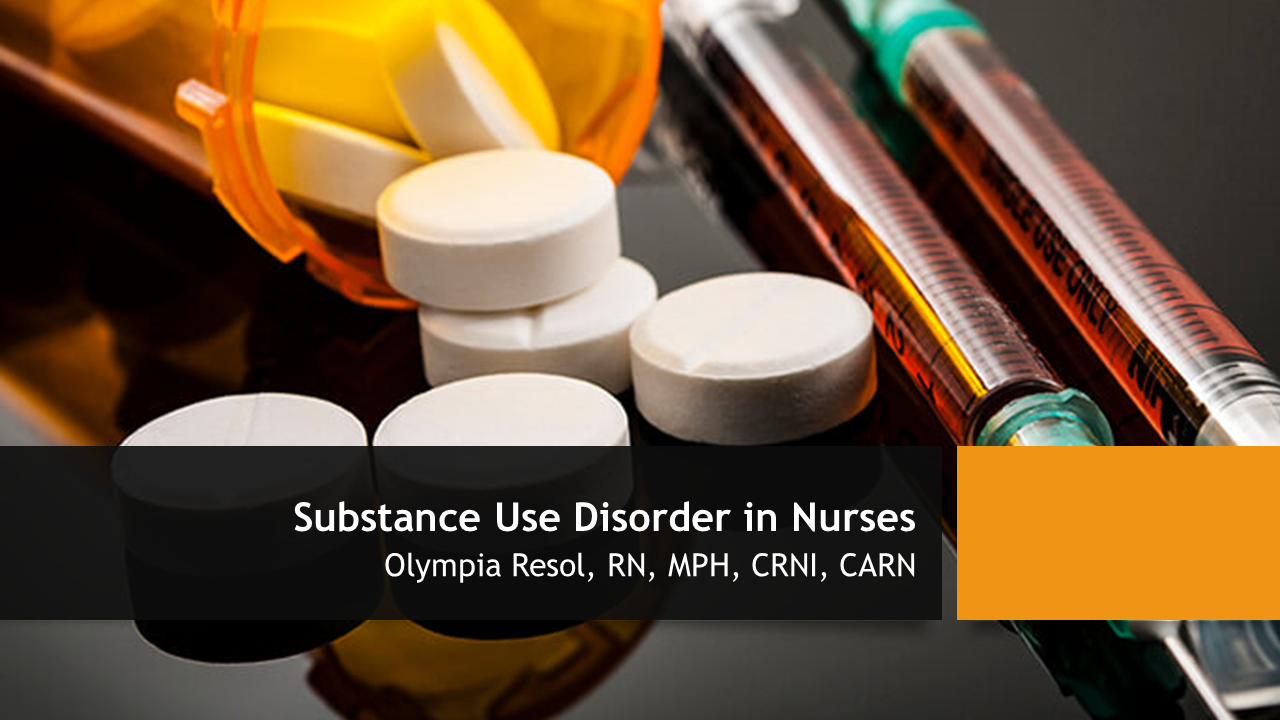
ONE survey question ONLY @ the end
The Diagnostic and Statistical Manual of Mental Disorders (DSM-5) defines substance use disorder as “a cluster of cognitive, behavioral, and physiological symptoms indicating that the individual continues using the substance despite significant substance-related problems” (American Psychiatric Association, 2013). The DSM-5 identifies four groupings of criteria that are characteristic of the disorder (American Psychiatric Association, 2013).
View More
The Diagnostic and Statistical Manual of Mental Disorders (DSM-5) defines substance use disorder as “a cluster of cognitive, behavioral, and physiological symptoms indicating that the individual continues using the substance despite significant substance-related problems” (American Psychiatric Association, 2013). The DSM-5 identifies four groupings of criteria that are characteristic of the disorder (American Psychiatric Association, 2013).
Opioids-Improving and Promoting Safe Prescription
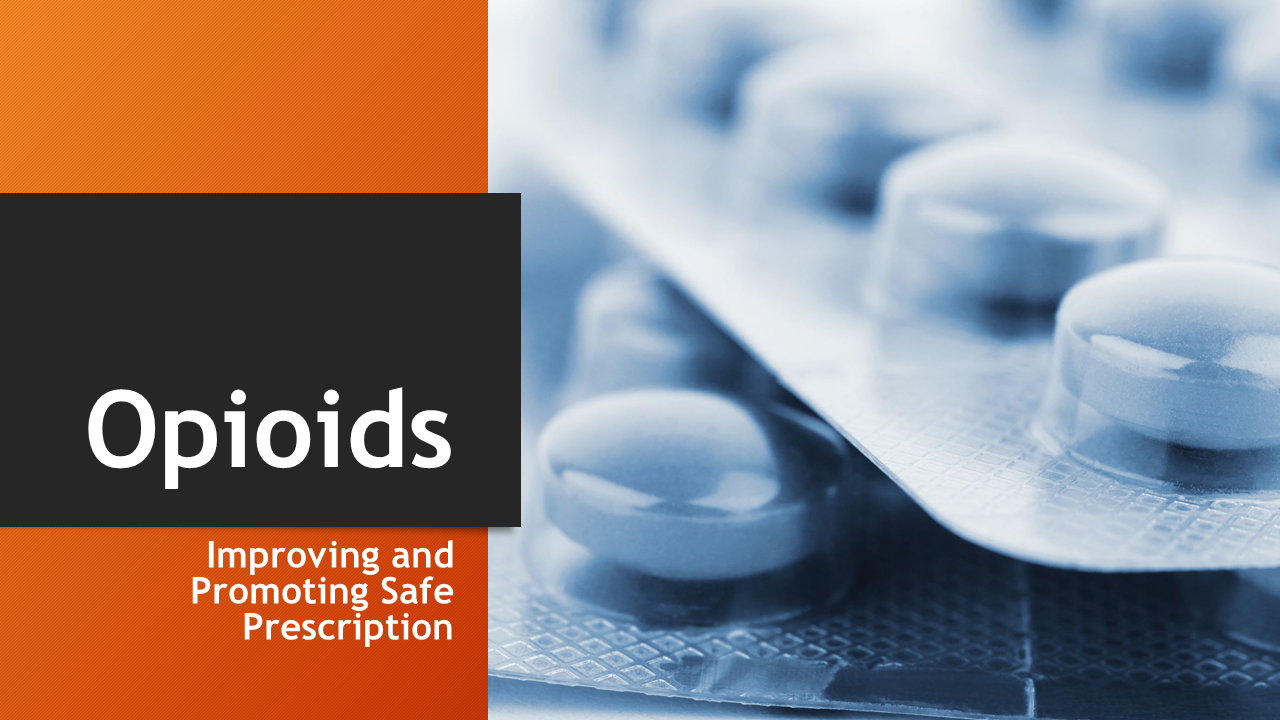
ONE survey question ONLY @ the end
Opioids are a class of drugs that include the illegal drug heroin, synthetic opioids such as fentanyl, and pain relievers available legally by prescription, such as oxycodone (OxyContin®), hydrocodone (Vicodin®), codeine, morphine, to mention a few.
View More
ONE survey question ONLY @ the end
Opioids are a class of drugs that include the illegal drug heroin, synthetic opioids such as fentanyl, and pain relievers available legally by prescription, such as oxycodone (OxyContin®), hydrocodone (Vicodin®), codeine, morphine, to mention a few.
Naloxone: The Opioid Reversal Drug that Saves Lives
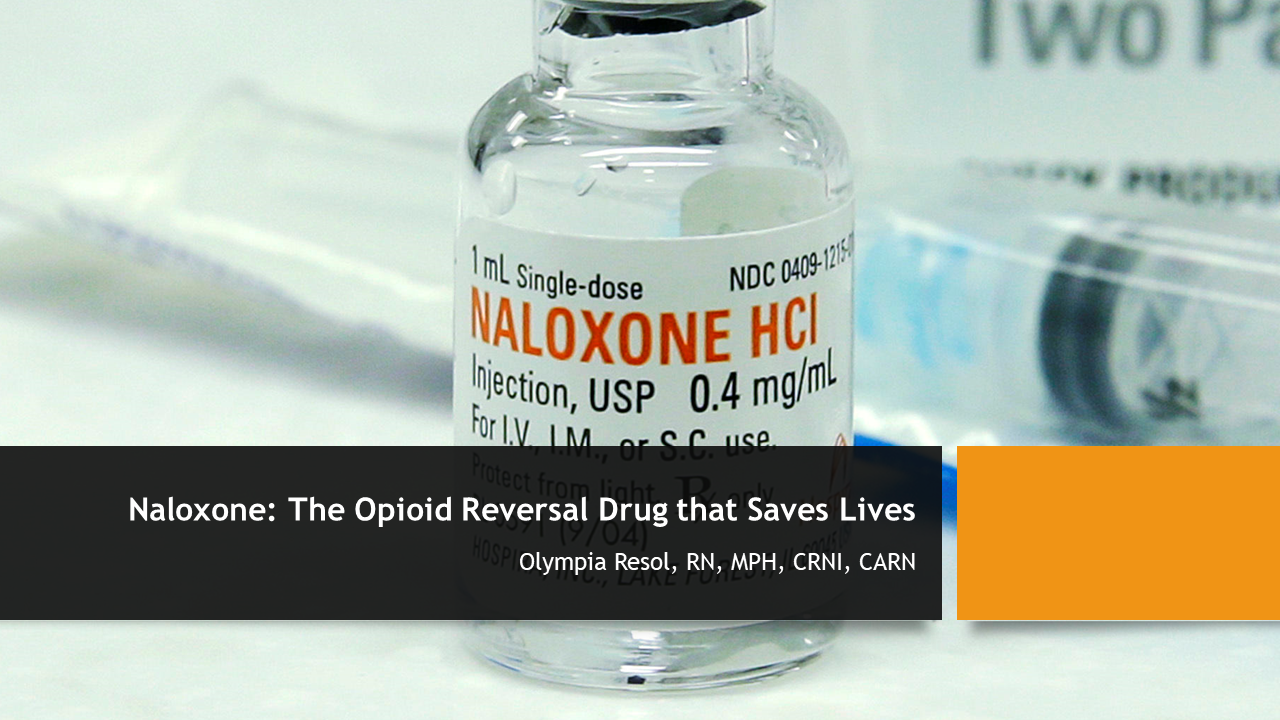
ONE survey question ONLY @ the end
Objectives:Discuss the risk-benefit relationship related to the use of opioids to treat chronic pain;Compare the potency of fentanyl relative to heroin;State the most common reason cited for mis-using prescription opioid products;Characterize the key sign of opioid overdose;State the main safety concern associated with the use of naloxone as an antidote for opioid overdose;Name one positive outcome conclusively associated with increasing the availability of naloxone.
View More
ONE survey question ONLY @ the end
Objectives:
Discuss the risk-benefit relationship related to the use of opioids to treat chronic pain;
Compare the potency of fentanyl relative to heroin;
State the most common reason cited for mis-using prescription opioid products;
Characterize the key sign of opioid overdose;
State the main safety concern associated with the use of naloxone as an antidote for opioid overdose;
Name one positive outcome conclusively associated with increasing the availability of naloxone.
Opioid Use & Chronic Pain
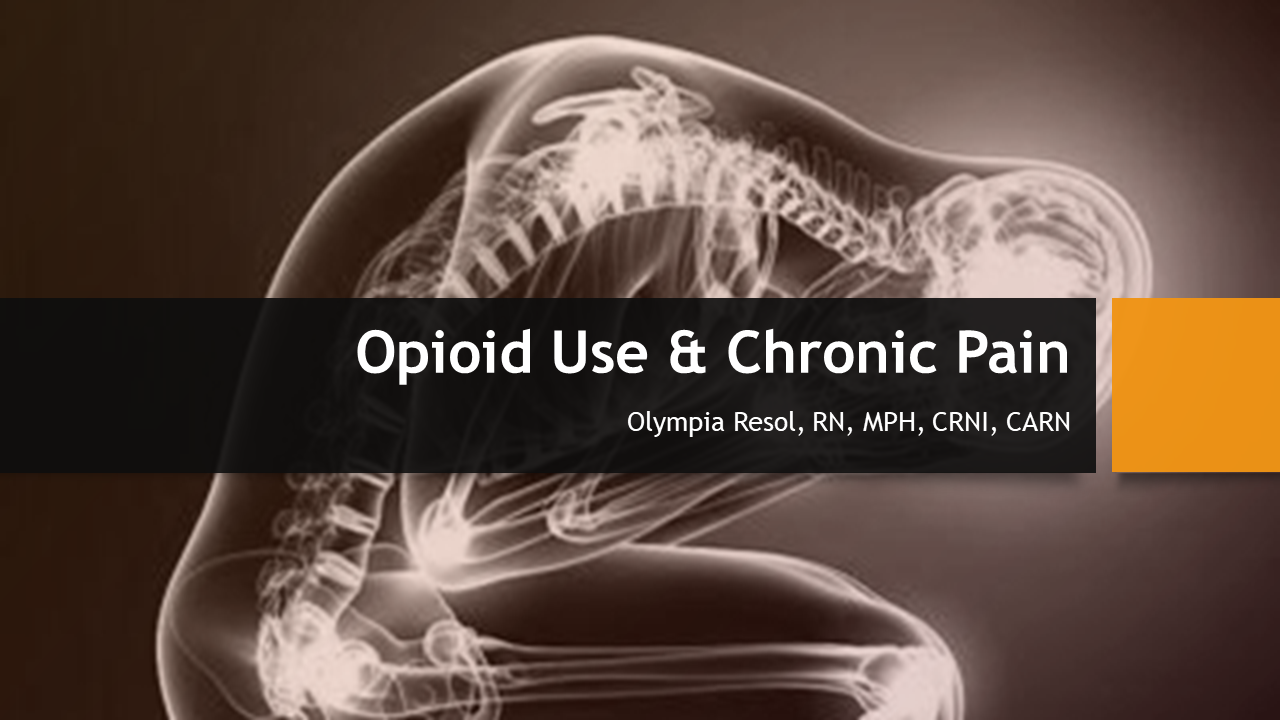
ONE survey question ONLY @ the end
IntroductionHistorically, prescribers limited the use of opioids for pain management solely to patients with acute or cancer-related pain. Over time, the use of opioids to treat many types of pain has increased to dangerously high levels (Berland, 2012). This shift does not come without controversy, as considerable debate continues regarding the appropriate use of these potent, and potentially addictive medications (Ault, 2015). The increase in opioid prescribing is staggering: In 1991, approximately 76 million opioid prescriptions were written in the United States, and by 2013 this figure jumped to nearly 207 million. The United States is the world’s largest consumer of these medications, cornering nearly 100% of the global hydrocodone demand, and 81% of the demand for oxycodone (NIH, 2014). Of the estimated 24.6 million U.S. citizens (i.e., 9.4% of the population 12 and older) suffering from substance abuse, approximately 1.9 million people abuse or are dependent on prescription opioid drugs. Addiction occurs in every state, county, socio-economic, and ethnic group (ASAMOAD, 2016). Due to this surge in the use of prescription narcotics, 53 people in the U.S. die each day of a prescription opioid overdose (CDC, 2018).
View More
ONE survey question ONLY @ the end
Introduction
Historically, prescribers limited the use of opioids for pain management solely to patients with acute or cancer-related pain. Over time, the use of opioids to treat many types of pain has increased to dangerously high levels (Berland, 2012). This shift does not come without controversy, as considerable debate continues regarding the appropriate use of these potent, and potentially addictive medications (Ault, 2015). The increase in opioid prescribing is staggering: In 1991, approximately 76 million opioid prescriptions were written in the United States, and by 2013 this figure jumped to nearly 207 million. The United States is the world’s largest consumer of these medications, cornering nearly 100% of the global hydrocodone demand, and 81% of the demand for oxycodone (NIH, 2014).
Of the estimated 24.6 million U.S. citizens (i.e., 9.4% of the population 12 and older) suffering from substance abuse, approximately 1.9 million people abuse or are dependent on prescription opioid drugs. Addiction occurs in every state, county, socio-economic, and ethnic group (ASAMOAD, 2016). Due to this surge in the use of prescription narcotics, 53 people in the U.S. die each day of a prescription opioid overdose (CDC, 2018).
eInhalant Abuse
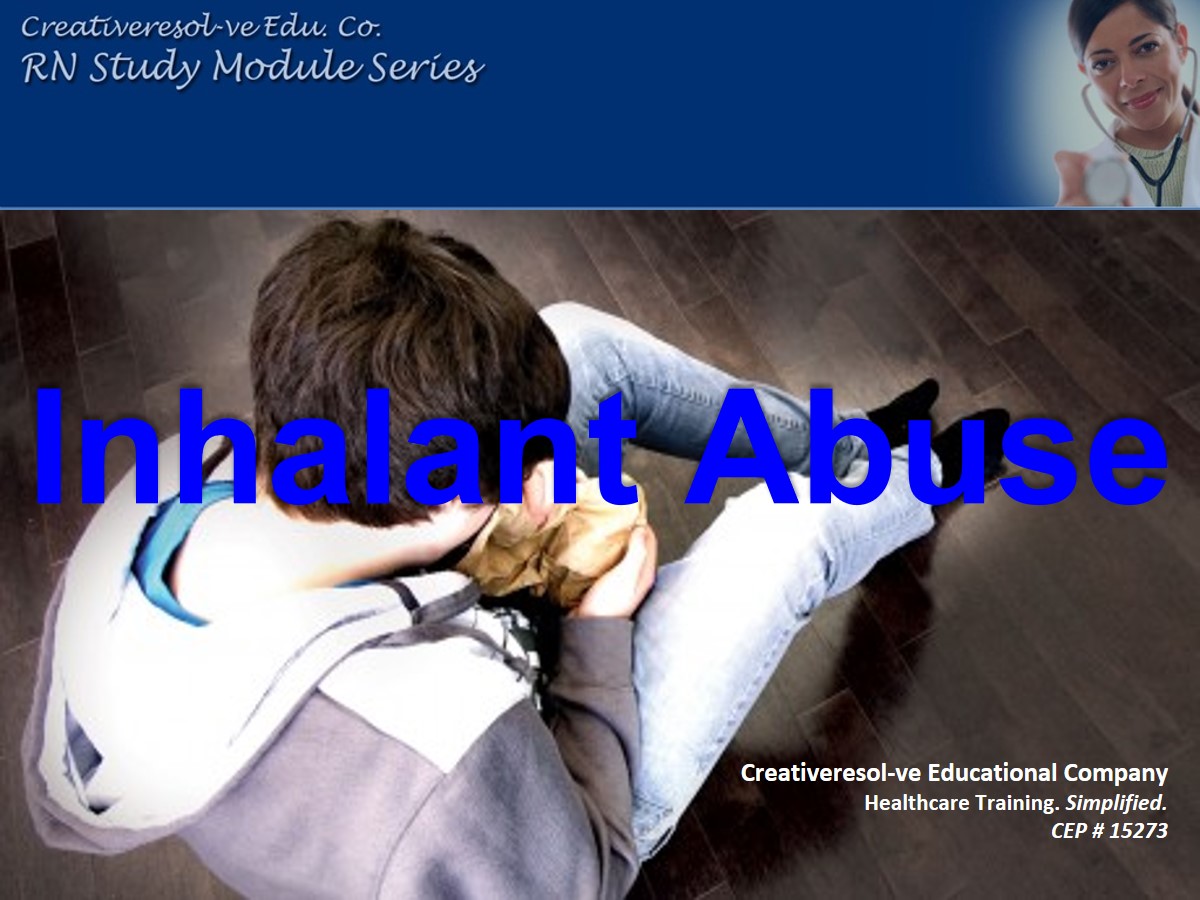
For CEU verification, ALL Health Professionals should create an account first.We apologize for the inconvenience.Inhalants tend to be the first agent used by children to get high which could lead to addiction if not recognized early. This course provides investigative strategies to identify signs of inhalant abuse and how to care for the addicted patients.Objectives
By the end of this course, participants will be able to
1. Define inhalants
2. Identify classes and examples of inhalants
3. Obtain knowledge regarding general care for the patient addicted to inhalants
View More
For CEU verification, ALL Health Professionals should create an account first.We apologize for the inconvenience.
Inhalants tend to be the first agent used by children to get high which could lead to addiction if not recognized early. This course provides investigative strategies to identify signs of inhalant abuse and how to care for the addicted patients.
Objectives
By the end of this course, participants will be able to
1. Define inhalants
2. Identify classes and examples of inhalants
3. Obtain knowledge regarding general care for the patient addicted to inhalants
By the end of this course, participants will be able to
1. Define inhalants
2. Identify classes and examples of inhalants
3. Obtain knowledge regarding general care for the patient addicted to inhalants
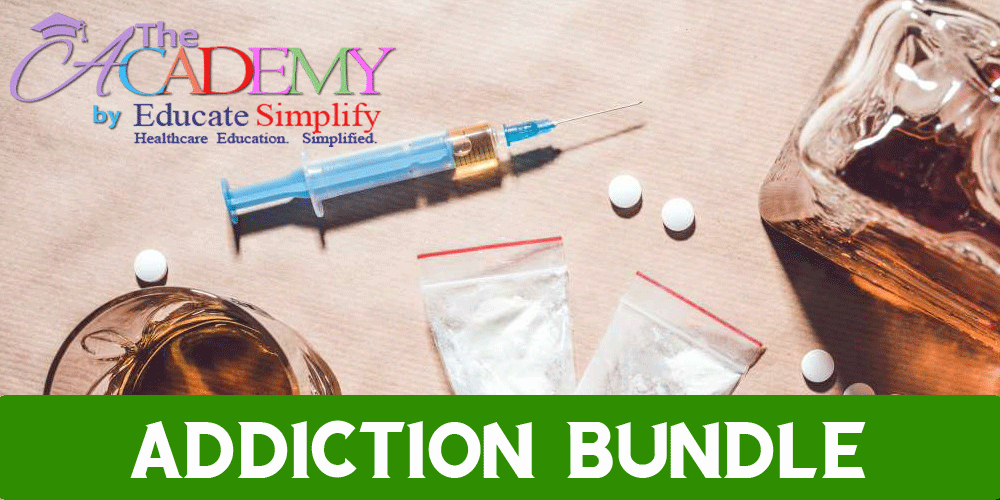
Additional Information
-
Bundle Course
-
20.00
-
10.00 hours
-
No Certificate issued upon course completion
Payment Method Available
-
Stripe
-
PayPal

